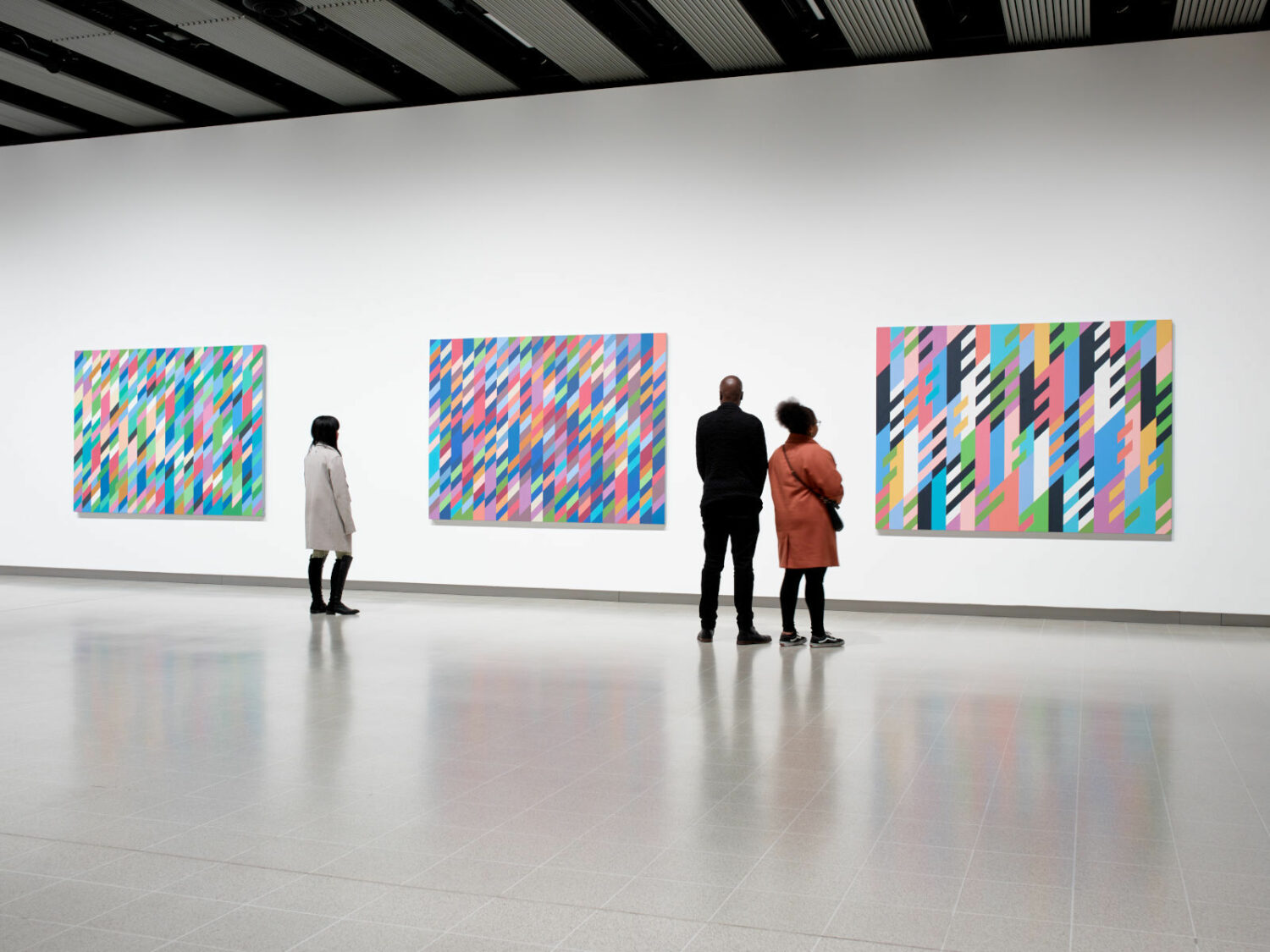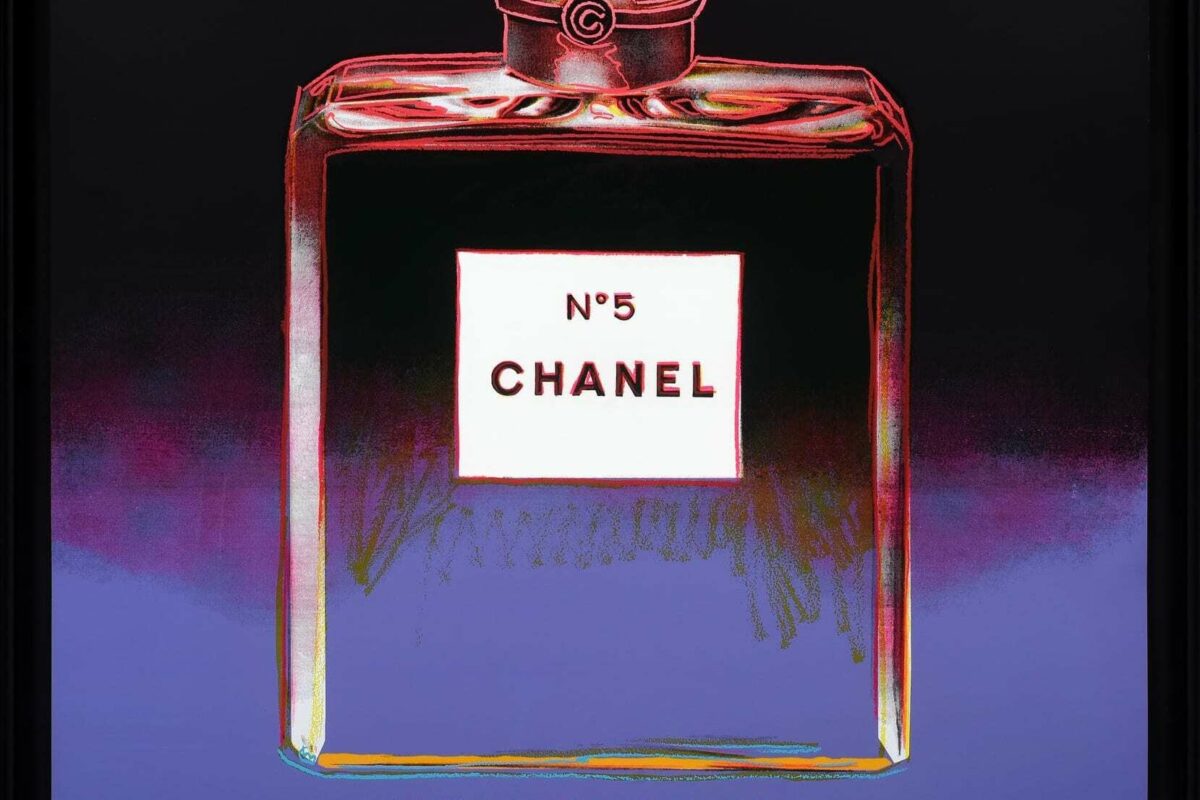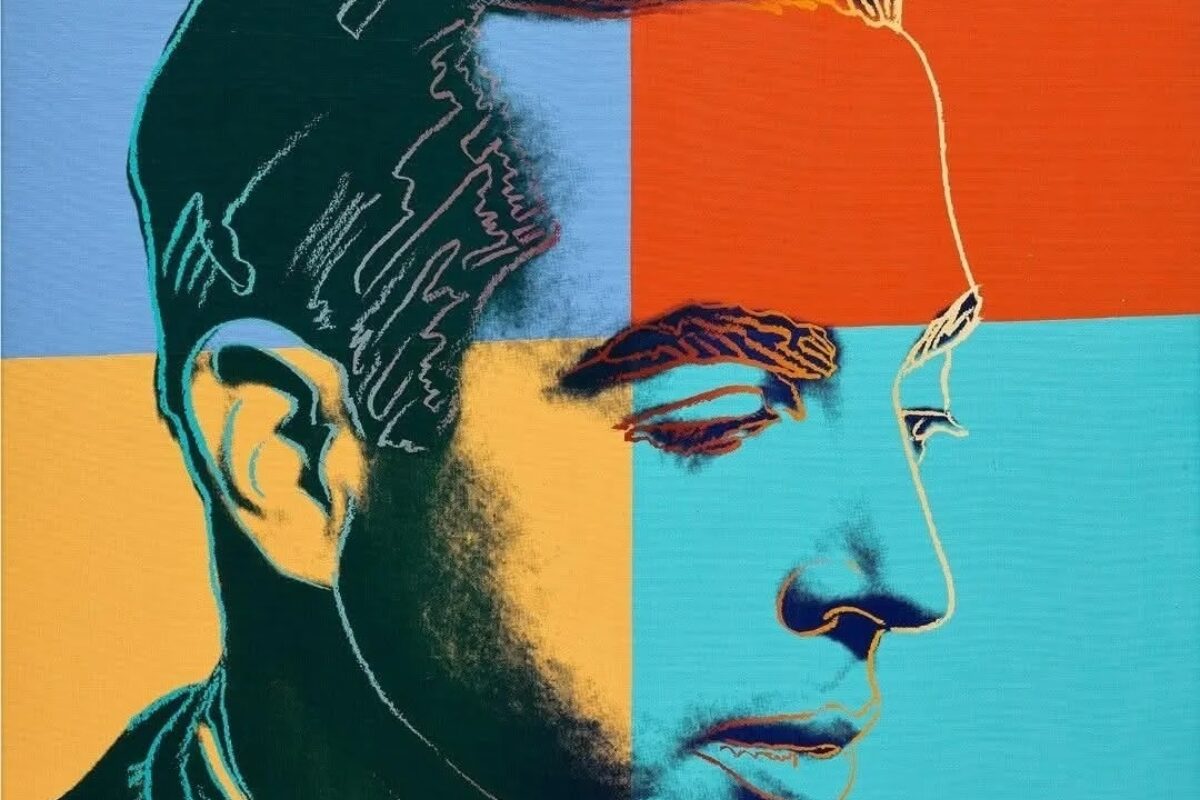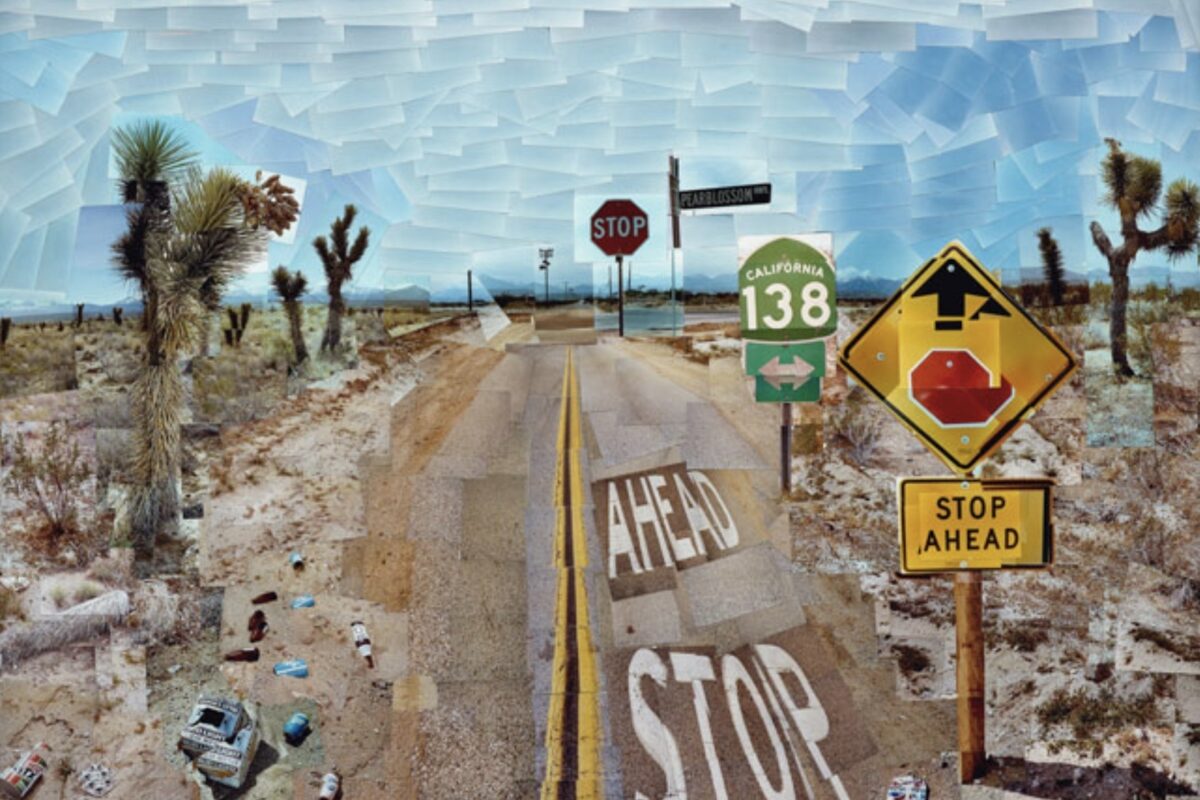1960s
Just a year after her first solo show (at London’s influential Gallery One), Bridget Riley was already winning awards. In 1963, she scooped both the AICA Critics Prize and a John Moores', Liverpool Open Section prize for her pioneering Op-Art works. In 1965, one of Riley’s pieces made the cover of the catalogue for MoMA’s influential exhibition, The Responsive Eye and her name was made worldwide. The resulting media frenzy distressed the artist, who was upset to see her work treated in a reductivist fashion and her images subsequently borrowed for use on clothing and in adverts. None of this harmed her reputation, however, and in 1968, she became the first woman to win the International Prize at the Venice Biennale.

Catalogue cover for MoMA's The Responsive Eye by William C Seitz | Published by The Museum of Modern Art, New York, 1965
Via AbeBooks
1970s
Working predominantly with black, white and latterly grey in the 1960s, Riley began to add colour to her work from 1967, intrigued by perceptions of different tones. At the dawn of the 1970s, Riley put on her first large-scale UK exhibition – Paintings and Drawings at the three-year-old Hayward Gallery in London (she was the first contemporary painter to have a solo show at the gallery). Among the large, geometric canvases she had become known for was a delicate early work influenced by Georges Seurat, the pointillist who had a profound effect on the artist. “It was the key into another world,” she told Sir John Leighton in conversation in 2019.


Installation view of Bridget Riley: Paintings and Drawings 1951-71, Hayward Gallery, 1971
Photos by John Webb
1980s
Spurred on by a trip to Cairo, Riley began to explore an Egyptian-inspired palette in the early part of the decade, playing with stripes of sky blue, azure and deep coral. Named Ka after the ancient Egyptian idea of life force and Ra after the king of its deities, her paintings of this time illustrate her tenacity in terms of creating tight, unique colour palettes from memory. Towards the middle of the decade, Riley introduced another step into her work, adding diagonals to her signature stripes in a development that would eventually lead to her famous Lozenges.



Bridget Riley, Ka 4, 1980, Reflection, 1982, Luxor, 1982, all oil on canvas
© Bridget Riley
1990s
After a decade where taste veered to more outrageous work from the likes of the YBAs and Jeff Koons, Riley was firmly back in vogue again by 1999, thanks to a show at London’s Serpentine Gallery that put her on the art world's radar once again. Featuring 30 works from the 1960s and 70s, it charted her gradual move towards colour and was her largest exhibition since 1971.

Riley in her Notting Hill studio, 1992
Via The Times | Credit Alamy
2000s
For eleven years between 1998 and 2009, Riley produced a series of Lozenge prints – satisfying chunks of interlocking bright shades. Influenced by dance and movement, these undulating works inspire joy and contemplation.

Bridget Riley, Study for Painting with Verticals - Cadence 4, 2006. Sold at Bonhams in 2020 for £93,812. for
© Bridget Riley

Leap
- 2008
- Screen print on paper
- Edition of 75
- Signed and numbered by the artist
- 84cm x 45cm
- Sold framed
£9,950
Make an Offer
For 'Bridget Riley – Leap'
Artwork Enquiry
Bridget Riley – Leap United States

Bridget Riley is one of the top ten most expensive living British artists and one of the top ten most expensive living women artists. In 2016 her 'Untitled (Diagonal Curve)' fetched an outstanding record of over £4.3 million at Christie's, almost three times its high estimate.
2010s
This decade finished on a high for Riley, when her largest retrospective to date opened at London’s Hayward Gallery. Developing the show in conjunction with the gallery meant that the artist was able to control the narrative in what The Guardian called “a shimmering, rolling, flickering spectacular”. One of the most intriguing elements of the show was the collection of detailed drawings and studies illustrating Riley’s academic approach to her work and her great knowledge of art history.

Installation view of Bridget Riley major retrospective show at the Hayward Gallery in 2019
via GalleriesNow
2020s
Recognised for her pioneering influence on contemporary art, Bridget Riley has garnered increased interest from collectors over the last few years. High demand means works are harder to obtain and, despite Riley’s place among the top ten most expensive British artists, some experts believe that her work remains undervalued: not only are her pieces historically important but also instantly recognisable and technically proficient. In 2022, the painting Gala went way beyond its high estimate at Christie’s to achieve the highest price paid for a Riley work, £4,362,000.

Bridget Riley
© Colin Dodgson/Art Partner
Interested in Bridget Riley? Sign up and be the first to see our new acquisitions
More editorials about Bridget Riley
Art Market
The Hang | Your monthly round up of Art Market based News
31 Jul 2025 | 4 min read

Art Market
Market Watch: Auction highlights | RESULTS Part 2
7 Mar 2025 | 2 min read

Art Market
Market Watch: Auction highlights | RESULTS
3 Mar 2025 | 2 min read

Art Market
Market Watch: Auction highlights | Part 2
1 Mar 2025 | 2 min read

Art Market
Market Watch: Auction highlights | Part 1
24 Feb 2025 | 2 min read

Art Market
12 Moments of 2024
30 Dec 2024
Artists
All Things Bright and Beautiful
10 May 2023 | 3 min read
Artists
A Brief Retrospective of Bridget Riley
28 Mar 2023 | 5 min read
Art Market
Art Market Insight | What, Why and How To Invest
19 Jul 2022
More from Artists
Artists
The Diverse Techniques of Yayoi Kusama
21 Aug 2025 | 2 min read

Artists
Haring Decoded: The Symbolism of His Iconic Dog
12 Aug 2025 | 2 min read

Artists
Happy Birthday Andy Warhol, The King of Pop Art
6 Aug 2025

Artists
The Psychology of Kusama
14 Jul 2025 | 3 min read

Artists
From Rothko to Ruscha: Unpacking Harland Miller’s Influences
10 Jul 2025 | 3 min read

Artists
Decoded: David Shrigley
8 Jul 2025 | 2 min read

Artists
Is David Hockney the Most Important Living Artist?
2 Jul 2025

Artists
Top 10 Selling Warhol Sets
15 Jun 2025 | 2 min read

Artists
David Hockney | 5 Groundbreaking Moments
23 Apr 2025 | 3 min read













